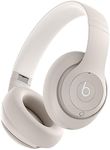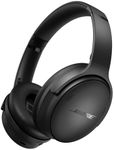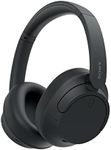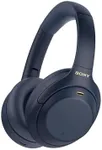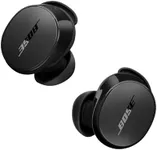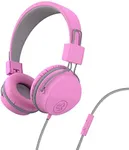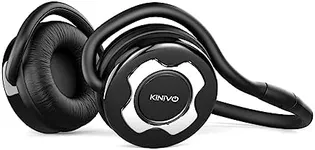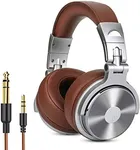Buying Guide for the Best Headphones For Work
Choosing the right headphones for work can significantly enhance your productivity and comfort. Whether you need them for conference calls, listening to music, or blocking out background noise, it's important to consider several key specifications to ensure you get the best fit for your needs. Here are the main specs to look at and how to navigate them.Type (Over-Ear, On-Ear, In-Ear)The type of headphones you choose affects comfort and sound quality. Over-ear headphones cover your entire ear and are generally the most comfortable for long periods, providing excellent sound quality and noise isolation. On-ear headphones rest on your ears and are more portable but may be less comfortable for extended use. In-ear headphones, or earbuds, are the most portable and can be very comfortable if you find the right fit, but they may not offer the same sound quality or noise isolation as over-ear models. Consider how long you'll be wearing them and your comfort preferences.
Noise CancellationNoise cancellation is a feature that reduces unwanted ambient sounds using active noise control. This is particularly important if you work in a noisy environment or need to focus without distractions. There are two types: active noise cancellation (ANC) and passive noise isolation. ANC uses microphones and speakers to reduce background noise, while passive noise isolation relies on the physical design of the headphones to block out sound. If you need to concentrate or work in a loud setting, ANC might be the best choice. For quieter environments, passive noise isolation may suffice.
Microphone QualityA good microphone is essential for clear communication during calls and virtual meetings. Look for headphones with a built-in microphone that offers noise reduction to minimize background noise. Some models have boom microphones that can be positioned closer to your mouth for better clarity. If you frequently participate in calls or video conferences, prioritize headphones with high-quality microphones to ensure you are heard clearly.
Battery LifeBattery life is crucial for wireless headphones, as it determines how long you can use them before needing to recharge. Battery life can range from a few hours to over 30 hours on a single charge. If you plan to use your headphones throughout the workday, look for models with longer battery life to avoid interruptions. For occasional use, shorter battery life may be acceptable.
Comfort and FitComfort and fit are important, especially if you wear headphones for extended periods. Look for adjustable headbands, cushioned ear cups, and lightweight designs to ensure they remain comfortable throughout the day. In-ear models should come with different sizes of ear tips to find the best fit. Consider trying on different models to see which feels the most comfortable for you.
ConnectivityConnectivity options include wired, Bluetooth, and other wireless technologies. Wired headphones offer a stable connection and don't require charging, but they can be less convenient due to the cable. Bluetooth headphones provide more freedom of movement and are compatible with most modern devices, but they need to be charged. Some models offer both wired and wireless options for flexibility. Choose based on your preference for mobility and convenience.
Sound QualitySound quality is subjective and depends on personal preference. Some people prefer a balanced sound, while others like enhanced bass or treble. Look for headphones with good reviews for sound quality and consider trying them out if possible. If you listen to music while working, prioritize models known for their audio performance. For calls and meetings, clear and natural sound is more important.

